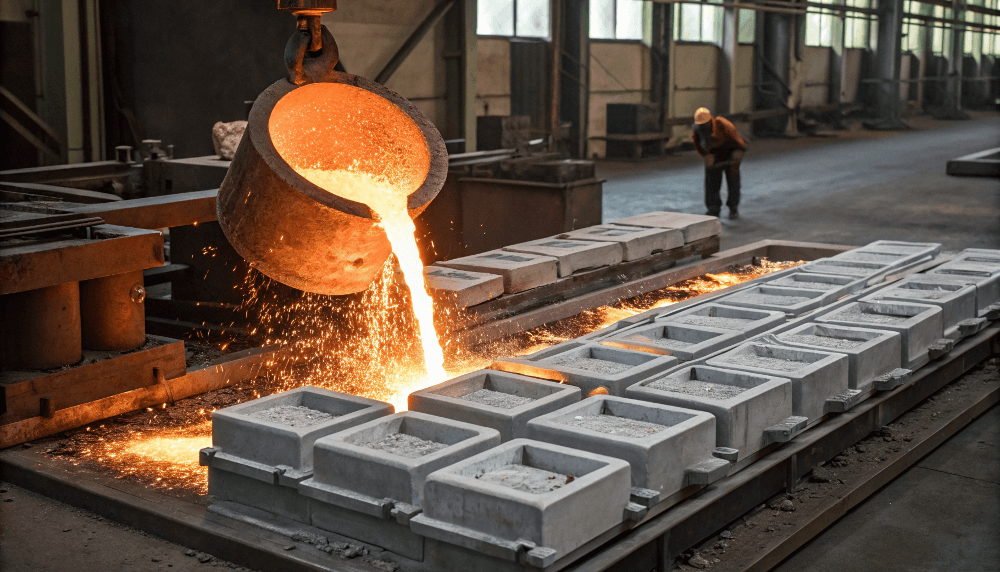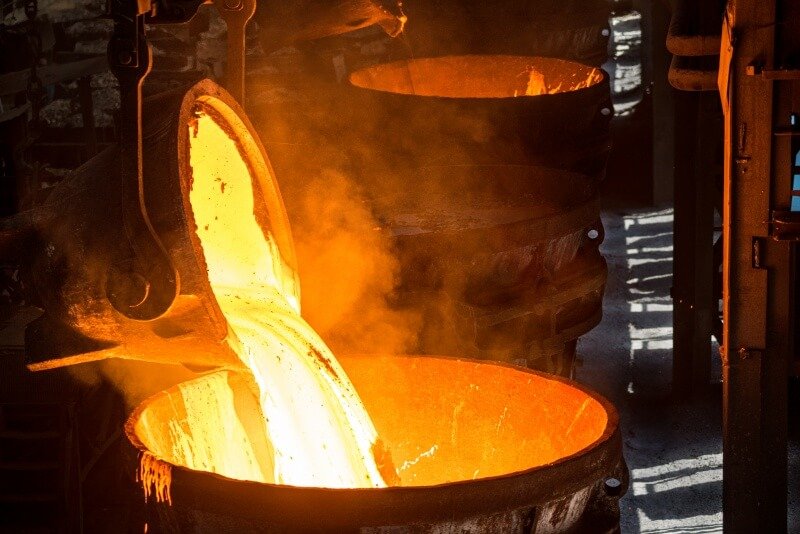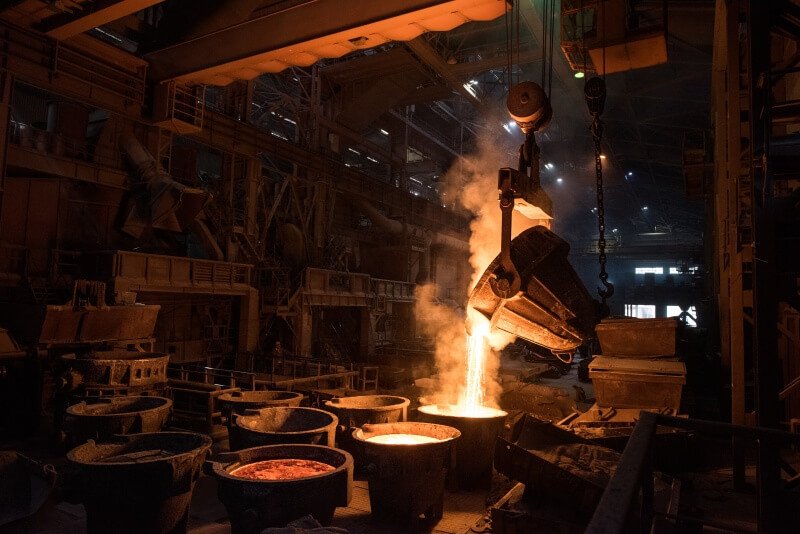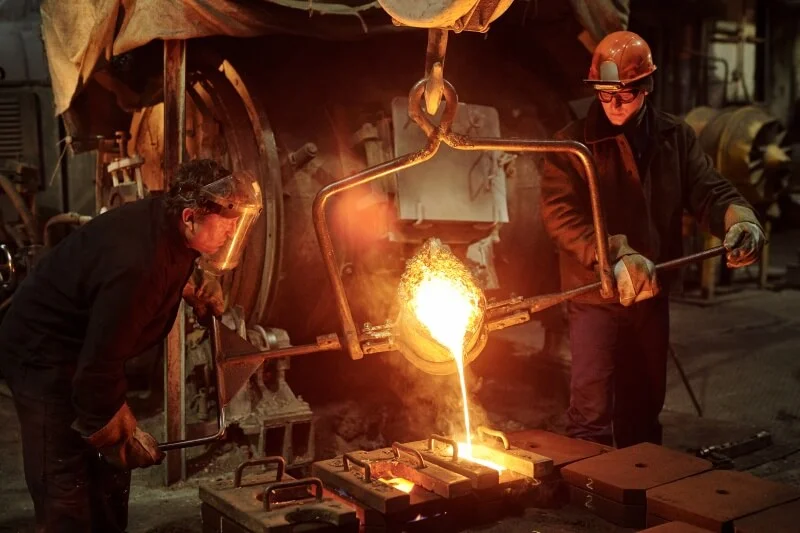When you’re looking to manufacture durable, precise components, finding the right casting method is crucial. Custom aluminum sand casting stands out as a reliable, cost-effective option.
In the following article, we will explore the benefits of custom aluminum sand casting, why it is a popular choice, and how it can improve your manufacturing process.
The goal is to provide a comprehensive understanding of custom aluminum sand casting and how it can enhance your manufacturing efficiency. Let’s dive into the details to see why this method could be the right choice for your next project.

1. What is Custom Aluminum Sand Casting?
Aluminum sand casting is a versatile process that involves pouring molten aluminum into a sand mold. This process is widely used in various industries for creating precise, custom components.
Custom aluminum sand casting is highly valued for its cost-effectiveness and flexibility. It allows manufacturers to produce complex shapes and sizes with high precision.
Key Components of the Process
Custom aluminum sand casting involves several crucial steps that contribute to its success:
- Mold Preparation: The mold is made by compacting sand around a pattern, which is then removed to leave a hollow space.
- Molten Aluminum: The aluminum is melted and poured into the mold at high temperatures.
- Cooling and Finishing: Once cooled, the mold is broken to reveal the cast part, which may require further finishing for optimal quality.
| Step | Description |
|---|---|
| Mold Preparation | Sand is compacted around a pattern to form a mold. |
| Molten Aluminum | Aluminum is melted and poured into the mold at high temperatures. |
| Cooling and Finishing | The casting cools, and the mold is broken to remove the finished part. |
Custom aluminum sand casting excels at producing high-precision parts with complex geometries, making it ideal for industries like automotive and aerospace.
2. How Does Custom Aluminum Sand Casting Work?
The process involves creating a mold, pouring molten aluminum into it, and allowing it to cool and solidify into the desired shape. This method is known for its flexibility and cost-efficiency.
The core process of custom aluminum sand casting involves three key steps: preparation, pouring, and cooling. Each step must be executed with care to ensure high-quality outcomes.
The Mold Preparation Process
- Pattern Creation: A pattern, typically made of wax or metal, is placed in sand to create a mold.
- Sand Compaction: The sand is compacted around the pattern, forming the shape needed for casting.
- Mold Removal: Once the sand has hardened, the pattern is removed, leaving a cavity that will hold the molten aluminum.
Pouring and Cooling
- Molten Aluminum: Aluminum is heated to a molten state and poured into the prepared mold.
- Cooling: The aluminum cools and solidifies inside the mold, taking the shape of the cavity.
| Process Step | Details |
|---|---|
| Pattern Creation | A pattern is made from wax or metal and placed in the sand. |
| Sand Compaction | The sand is compacted around the pattern to form the mold. |
| Mold Removal | The pattern is removed, leaving a hollow cavity for aluminum. |
| Pouring Aluminum | Molten aluminum is poured into the prepared mold. |
| Cooling | The molten aluminum cools and solidifies, forming the final shape. |
Custom aluminum sand casting is particularly beneficial when manufacturers need to produce intricate parts in small to medium production runs.
3. What Are the Key Advantages of Custom Aluminum Sand Casting?
Custom aluminum sand casting offers several advantages that make it the preferred method for producing high-quality metal parts. It provides significant cost savings, precision, and versatility in design.
The primary benefits of custom aluminum sand casting include:
- Cost-effectiveness: This method is relatively inexpensive compared to other casting methods like die casting or investment casting.
- Design Flexibility: Sand casting allows for the creation of parts with complex geometries that are difficult to achieve with other methods.
- Precision: This process ensures a high level of detail, making it suitable for applications where accuracy is critical.
Practical Applications
- Automotive Components: Custom aluminum sand casting is widely used to manufacture engine parts, transmission components, and other high-performance parts.
- Aerospace: Components like turbine blades and housings can be made with high precision using this method.
| Advantage | Benefit |
|---|---|
| Cost-effectiveness | Lower production costs than other casting methods. |
| Design Flexibility | Ability to create complex parts and geometries. |
| Precision | High level of detail for critical applications like aerospace. |
The combination of low production costs and versatility makes it ideal for a variety of industrial applications.
4. How Does Custom Aluminum Sand Casting Compare to Other Casting Methods?
While custom aluminum sand casting offers many advantages, it’s important to compare it to other methods like die casting, investment casting, and permanent mold casting. Each method has its own strengths and weaknesses.
Custom aluminum sand casting holds its ground when compared to other casting methods. It excels in flexibility, material compatibility, and cost-effectiveness.
Sand Casting vs. Die Casting
- Cost: Sand casting is cheaper, especially for smaller production runs, while die casting requires higher initial investment.
- Precision: Die casting generally offers higher precision but may not be suitable for all geometries.
Sand Casting vs. Investment Casting
- Complexity: Investment casting can produce more intricate details than sand casting, but it’s more expensive and time-consuming.
- Size Limitations: Sand casting can accommodate larger parts compared to other methods, such as die or investment casting.
| Method Comparison | Sand Casting | Die Casting | Investment Casting |
|---|---|---|---|
| Cost | Low cost, especially for small runs. | Higher initial investment required. | Expensive, especially for complex parts. |
| Precision | Offers decent precision. | Higher precision for smaller parts. | Higher precision for complex details. |
| Part Size | Can accommodate larger parts. | Limited by size and complexity. | Limited to smaller, intricate parts. |
By understanding the strengths of each method, manufacturers can make more informed decisions about which casting process best suits their needs.
5. What Industries Benefit from Custom Aluminum Sand Casting?
Custom aluminum sand casting serves various industries by providing the flexibility and cost-effectiveness needed for high-quality production. Whether it’s automotive, aerospace, or industrial machinery, this method is versatile and highly effective.
The industries that benefit most from custom aluminum sand casting include:
- Automotive: Manufacturing engine blocks, transmission parts, and suspension components.
- Aerospace: Producing lightweight and durable components for airplanes and spacecraft.
- Industrial Machinery: Creating durable parts for construction equipment and heavy machinery.
Applications in Other Sectors
- Electronics: Custom sand casting is also used for enclosures, brackets, and other components in electronic devices.
- Art and Architecture: Some artists and architects use sand casting to create sculptures and decorative pieces.
| Industry | Application Examples |
|---|---|
| Automotive | Engine blocks, transmission parts, suspension components. |
| Aerospace | Turbine blades, housings, lightweight components. |
| Industrial Machinery | Components for construction and heavy equipment. |
| Electronics | Enclosures, brackets, and other components for devices. |
| Art and Architecture | Sculptures and decorative pieces. |
In industries like automotive and aerospace, custom aluminum sand casting ensures that components are durable, cost-effective, and tailored to specific design requirements.
6. How to Choose the Right Sand for Aluminum Casting?
Selecting the right sand for custom aluminum sand casting is crucial to ensure the durability and quality of the final product. Different types of sand and additives are used based on the requirements of the casting process.
The right sand selection can make a big difference in the strength, surface finish, and overall success of the casting. Factors like sand type, grain size, and binder materials play a key role in achieving optimal results.
Types of Sand and Key Factors to Consider
- Silica Sand: Most commonly used for aluminum casting. It offers good heat resistance.
- Clay: Often used in combination with silica sand for improved mold strength.
- Resin-Coated Sand: Provides better mold strength and surface finish but at a higher cost.
| Sand Type | Characteristics | Advantages | Disadvantages |
|---|---|---|---|
| Silica Sand | Highly heat-resistant, abundant, and cost-effective. | Widely used, durable, and cheap. | Limited strength for larger molds. |
| Clay Sand | Mixed with silica to increase mold strength. | Better mold strength. | More expensive and harder to handle. |
| Resin-Coated Sand | Sand coated with resin for added strength and finer finishes. | Smooth finish, high mold strength. | More expensive and time-consuming. |
Choosing the right sand depends on the mold strength required and the part’s complexity. Silica sand is most commonly used for aluminum casting, but for more complex parts, resin-coated sand may be a better option.
7. What Are the Typical Applications of Custom Aluminum Sand Casting?
Custom aluminum sand casting is used to produce a wide variety of parts across different industries. The flexibility of the casting process allows manufacturers to create components of various sizes, shapes, and designs.
Common applications include automotive components, aerospace parts, and industrial machinery. Custom sand casting is used to manufacture parts that require high precision and durability, such as engine blocks, pump housings, and complex machine components.
Applications in Various Industries
- Automotive: Custom sand casting is used to create engine blocks, cylinder heads, and exhaust manifolds.
- Aerospace: Lightweight parts such as turbine blades and housing components.
- Heavy Equipment: Parts used in construction and mining machinery like gears and hydraulic parts.
| Industry | Application Examples |
|---|---|
| Automotive | Engine blocks, cylinder heads, exhaust manifolds. |
| Aerospace | Turbine blades, housing components, aircraft structures. |
| Heavy Equipment | Gears, hydraulic parts, components for construction machinery. |
| Industrial Machinery | Pump housings, brackets, and custom machine components. |
This versatility makes custom aluminum sand casting an ideal solution for manufacturing critical components that require high strength and precision.
8. How Do You Ensure Quality in Custom Aluminum Sand Casting?
Ensuring quality in custom aluminum sand casting involves using strict quality control measures throughout the entire process. Proper mold preparation, accurate pouring of molten aluminum, and post-casting inspections are necessary to maintain high standards.
Quality assurance in custom aluminum sand casting can help reduce defects such as porosity and misalignment. Regular inspection and testing ensure that each component meets the required specifications.
Key Quality Control Steps
- Mold Inspection: Ensure that molds are free from defects before casting.
- Pouring Process: Control the temperature and flow of molten aluminum to prevent defects.
- Post-Casting Inspection: Visual and dimensional inspections to check for cracks, voids, or misalignments.
| Quality Control Step | Method/Tool Used | Purpose |
|---|---|---|
| Mold Inspection | Visual inspection, mold tests | Ensure proper mold strength and no defects. |
| Pouring Process | Thermocouples, flow sensors | Control temperature and molten flow. |
| Post-Casting Inspection | Dimensional measurements, X-ray inspections, visual checks | Detect defects like porosity or misalignment. |
Implementing these quality control measures ensures that the final product meets the required standards and reduces the likelihood of defects.
9. How Can Custom Aluminum Sand Casting Help Reduce Manufacturing Costs?
Custom aluminum sand casting helps manufacturers reduce overall costs through material savings, quicker turnaround times, and fewer post-casting processes. The process is efficient for producing high-quality parts without the need for expensive tooling or molds.
By reducing the cost of raw materials and labor, custom aluminum sand casting can lower the total production cost significantly. Additionally, sand can be reused, further contributing to cost savings.
Key Cost-Reducing Factors
- Material Reuse: Sand and aluminum scrap can often be recycled and reused, reducing material costs.
- Low Tooling Costs: Sand molds are inexpensive compared to other casting methods that require expensive molds.
- Efficiency in Mass Production: Sand casting allows for quicker production runs, reducing labor costs and lead times.
| Cost-Reducing Factor | Description | Benefit |
|---|---|---|
| Material Reuse | Reusing sand and aluminum scrap reduces material waste. | Cost savings on raw materials. |
| Low Tooling Costs | Sand molds are cheaper to make than metal molds. | Lower upfront investment. |
| Efficient Production | Quick turnaround times for mass production. | Reduces labor costs and lead time. |
Custom aluminum sand casting helps manufacturers stay competitive by cutting costs and increasing production efficiency, all while maintaining product quality.
10. What Are the Challenges of Custom Aluminum Sand Casting?
While custom aluminum sand casting has many benefits, there are challenges that manufacturers must consider. Some of the common issues include defects such as porosity, the complexity of mold preparation, and the potential for uneven cooling.
These challenges can affect the quality of the final product if not addressed properly. However, with proper care in the design, pouring, and inspection phases, these issues can be minimized.
Common Challenges and Solutions
- Porosity: Air pockets within the casting can lead to weak spots. Ensuring proper pouring techniques and mold ventilation can prevent this.
- Mold Strength: Weak molds may collapse during pouring, leading to defects. Using higher-quality sand and binders can improve mold strength.
- Uneven Cooling: If the molten aluminum cools too quickly, it may cause cracking or warping. Proper cooling rates must be controlled.
| Challenge | Solution | Impact |
|---|---|---|
| Porosity | Proper mold ventilation and controlled pouring methods. | Reduces internal defects in parts. |
| Mold Strength | Use stronger sand and binders to reinforce molds. | Prevents mold failure during pouring. |
| Uneven Cooling | Control cooling rates to avoid rapid solidification. | Minimizes cracking and warping. |
Understanding and addressing these challenges ensures a more consistent and higher-quality casting result.
11. How Can Custom Aluminum Sand Casting Be Used for Prototyping?
Custom aluminum sand casting is an excellent choice for prototyping due to its low cost, flexibility, and speed. Unlike other methods that may require expensive tooling or molds, sand casting allows manufacturers to create prototypes quickly and at a reduced cost.
Using custom aluminum sand casting for prototyping can save time and money while allowing for adjustments to be made during the development process. This makes it a popular choice for product developers and manufacturers.
Benefits for Prototyping
- Cost Savings: Sand casting requires minimal tooling, which reduces upfront costs.
- Quick Turnaround: The process is faster than other casting methods, allowing for faster prototyping.
- Flexibility: Prototypes can be easily adjusted by modifying the sand mold.
| Benefit | Description | Advantage |
|---|---|---|
| Cost Savings | Minimal tooling and mold costs make sand casting more affordable. | Reduces prototyping expenses. |
| Quick Turnaround | Sand casting allows for faster creation of prototypes. | Shortens the development cycle. |
| Flexibility | Easily adaptable molds for iterative design changes. | Enables quick adjustments during testing. |
Custom aluminum sand casting is an ideal choice for manufacturers needing prototypes that require flexibility, speed, and cost-effectiveness.
12. What Equipment is Needed for Custom Aluminum Sand Casting?
Several pieces of specialized equipment are required to carry out custom aluminum sand casting effectively. The right equipment ensures precision, speed, and safety throughout the entire process.
Proper equipment is essential to maintain the high-quality standards that aluminum casting demands. The key equipment includes furnaces for melting aluminum, sand molding machines, and cooling systems for the finished products.
Key Equipment in Sand Casting
- Furnaces: Used to melt the aluminum to the required temperature.
- Sand Mold Preparation Equipment: Machines for compacting sand around patterns.
- Pouring Systems: To pour molten aluminum into molds accurately.
- Cooling Systems: Essential for ensuring the aluminum cools at the right rate.
| Equipment | Purpose | Key Features |
|---|---|---|
| Furnace | To melt aluminum to the required temperature. | Capable of reaching high temperatures. |
| Sand Molding Machine | To prepare the sand molds. | Ensures uniform mold compaction. |
| Pouring System | To pour molten aluminum into molds. | Designed for controlled pouring accuracy. |
| Cooling System | For cooling the aluminum once poured into molds. | Ensures uniform cooling and prevents cracking. |
Investing in high-quality equipment ensures a smooth casting process, resulting in durable, precise components.
13. How Can You Improve the Sand Casting Process?
Improving the sand casting process involves adopting best practices in mold preparation, pouring, and post-casting procedures. Innovations in technology and materials can help enhance the quality of aluminum castings and reduce defects.
Several methods can help improve the quality and efficiency of the sand casting process, such as using advanced mold materials, optimizing pouring techniques, and automating certain stages.
Techniques to Improve Sand Casting
- Mold Material Innovations: Using higher-quality sand and binders to increase mold strength.
- Automation: Incorporating automated pouring systems for consistent results.
- Advanced Cooling Techniques: Implementing better cooling systems to reduce defects like warping.
| Improvement Method | Description | Expected Result |
|---|---|---|
| Mold Material Innovation | Using stronger sand and advanced binders. | Improved mold strength and casting durability. |
| Automation | Implementing automated systems for more precise pouring. | Increased accuracy and reduced human error. |
| Advanced Cooling | Using advanced cooling technologies to control temperature. | Reduced defects such as warping or cracking. |
By incorporating these improvements, manufacturers can ensure higher-quality aluminum parts and a more efficient casting process.
14. What Are the Environmental Considerations in Custom Aluminum Sand Casting?
Aluminum sand casting is not only an efficient process but also one that can be made more environmentally friendly. By focusing on recycling and reducing energy consumption, manufacturers can minimize the environmental impact of casting operations.
Custom aluminum sand casting has the potential to be more sustainable by recycling sand and aluminum scrap, reducing waste, and improving energy usage. These practices help reduce the carbon footprint of the manufacturing process.
Sustainable Practices in Sand Casting
- Recycling Sand: Sand used in the casting process can be recycled and reused multiple times.
- Recycling Aluminum Scrap: Excess aluminum can be melted down and reused, reducing waste.
- Energy Efficiency: Modern furnaces and cooling systems are more energy-efficient, reducing the overall energy consumption.
| Sustainable Practice | Description | Environmental Benefit |
|---|---|---|
| Recycling Sand | Reusing sand multiple times in casting processes. | Reduces material waste and mining impact. |
| Recycling Aluminum | Melting down scrap aluminum for reuse in new parts. | Reduces waste and the need for virgin materials. |
| Energy Efficiency | Using modern, efficient furnaces and cooling systems. | Lower energy consumption and carbon emissions. |
By adopting these sustainable practices, custom aluminum sand casting can reduce its environmental footprint while maintaining high manufacturing standards.
15. How to Find Reliable Custom Aluminum Sand Casting Suppliers?
Finding the right supplier for custom aluminum sand casting is essential to ensuring quality, timely delivery, and competitive pricing. It’s important to assess potential suppliers based on their capabilities, reputation, and customer service.
When selecting a supplier, key factors to consider include their manufacturing capabilities, customer support, and experience with similar projects. Building strong relationships with suppliers can help streamline the casting process and reduce the risk of defects.
Key Factors to Evaluate
- Experience: Look for suppliers with extensive experience in custom aluminum sand casting.
- Quality Control: Ensure the supplier uses robust quality control systems.
- Delivery Time: Assess their ability to meet deadlines for production runs.
| Evaluation Criteria | What to Look For | Importance |
|---|---|---|
| Experience | Suppliers with proven expertise in aluminum sand casting. | Ensures high-quality and consistent products. |
| Quality Control | Robust quality management processes and testing procedures. | Guarantees defect-free parts and timely delivery. |
| Delivery Time | Timely delivery of products and meeting production deadlines. | Reduces production delays and improves efficiency. |
Choosing a reliable supplier for custom aluminum sand casting ensures that your components are of high quality, produced on time, and meet your specifications.
Conclusion
In conclusion, custom aluminum sand casting offers many benefits that make it an excellent choice for manufacturing high-quality, precise components. Its cost-effectiveness, design flexibility, and precision allow it to serve industries ranging from automotive to aerospace.
If you’re considering custom aluminum sand casting for your next project, it’s essential to understand the process and advantages fully. This method might be the solution to achieving both cost savings and top-notch quality.
FAQ Section
Q1: What is custom aluminum sand casting?
Custom aluminum sand casting is a process where molten aluminum is poured into a sand mold to create parts in various shapes and sizes. It’s known for being cost-effective and flexible.
Q2: How does the custom aluminum sand casting process work?
The process involves creating a sand mold, pouring molten aluminum into it, and allowing it to cool. The mold is then broken to reveal the finished part.
Q3: What are the benefits of using custom aluminum sand casting?
Custom aluminum sand casting offers low cost, design flexibility, and precision. It’s ideal for producing complex parts with detailed specifications.
Q4: How do you ensure the quality of custom aluminum sand casting?
Quality is ensured through precise mold preparation, careful pouring of molten aluminum, and stringent post-casting inspection and testing methods.
Q5: What industries benefit most from custom aluminum sand casting?
Industries like automotive, aerospace, and industrial machinery benefit the most, using this method for producing durable, high-quality parts at a lower cost.




